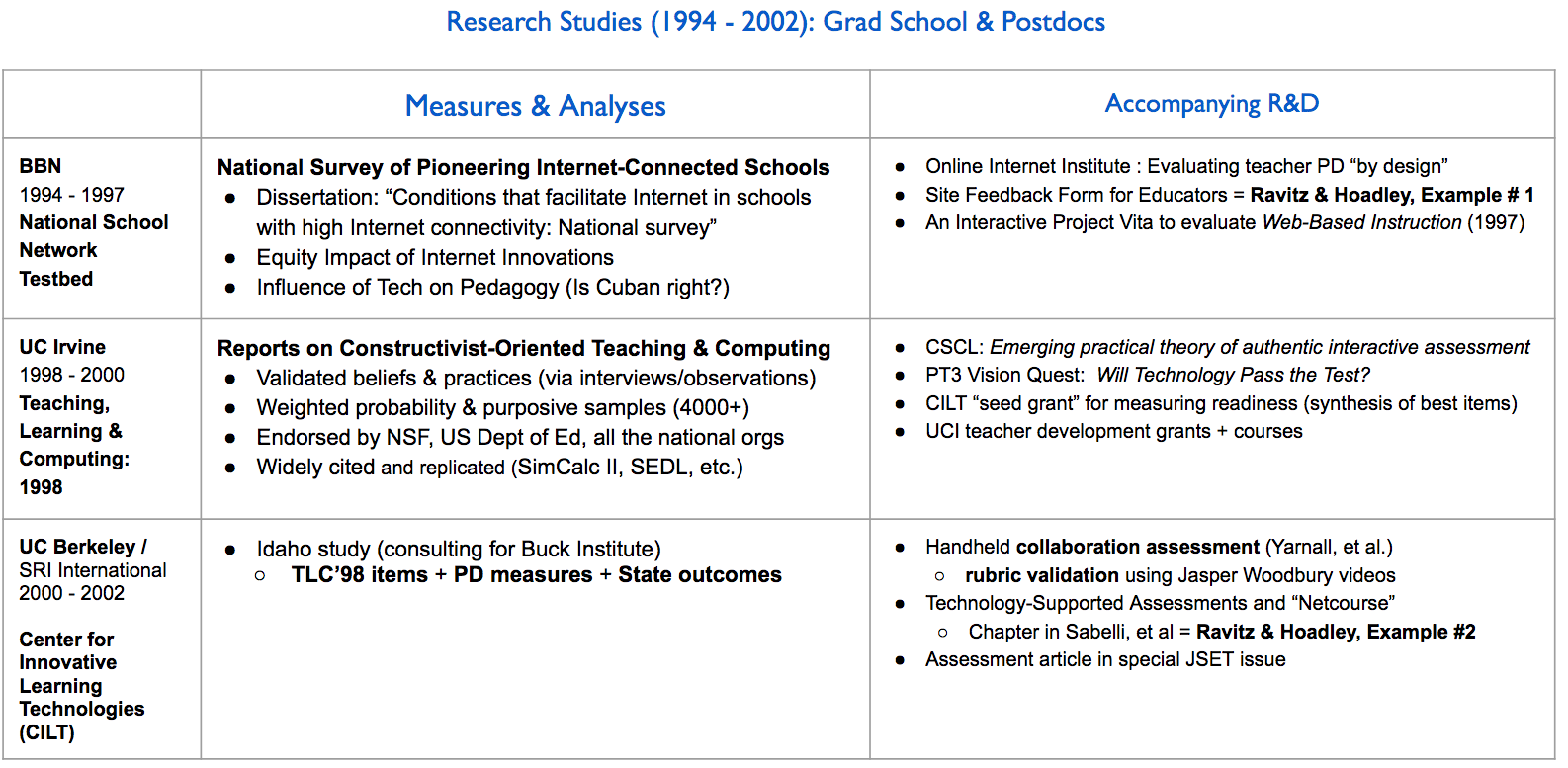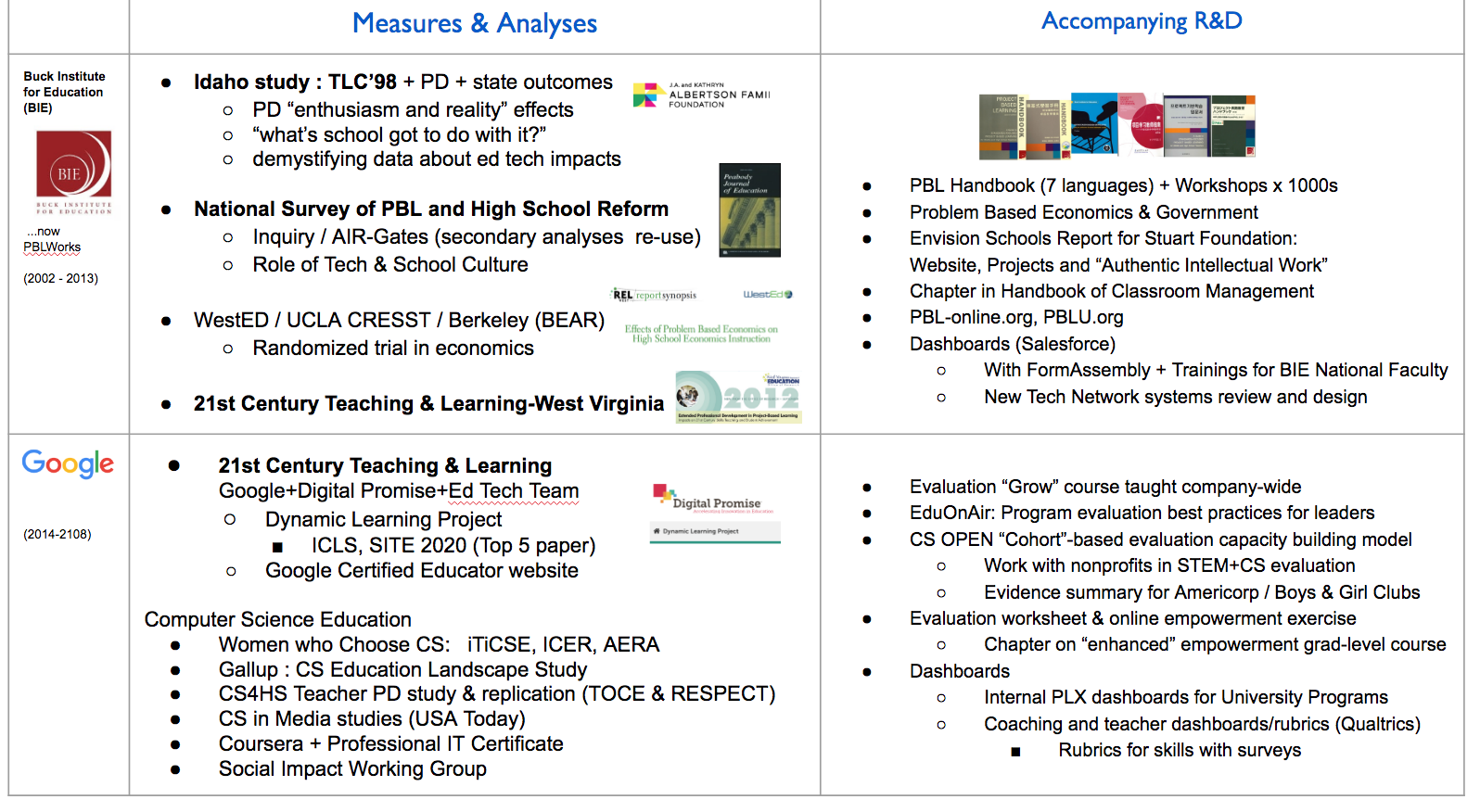Past Projects
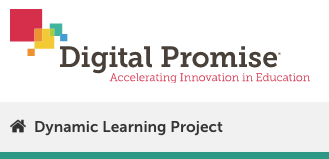
Increasing Impactful Technology Use - Dynamic Learning Project (DLP)
Google and Digital Promise adapted the 21st Century Teaching and Learning Framework to guide research and coaching for the Dynamic Learning Project.
Research products
- SITE (2020) Paper (best paper award)
- Year 2 info graphic and full report
- Blog sharing measures
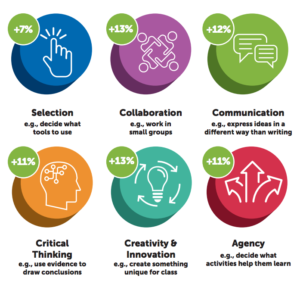
- ISTE 2020 paper on measures

Evaluation of Educational Outreach
The evaluation outreach strategy was designed with 4 pillars in mind:
- Make evaluation more useful
- Promote evaluation across the company
- Inform the field to learn and build capacity
- Make tools accessible for use and discussion
This work led to metrics and strategies for moving teams through stages of evaluation, and a series of evaluation capacity building initiatives.
Levels of support
- Direct support (high touch)
- Managing external evaluators (medium touch)
- Influencing and advising (low touch)
- Self-paced tools and resource (lowest touch)
Sample research products
- USA Today Article on CS in Media project using Nielsen, USC School for Communication and Journalism, and Thicket Labs.
- Computer Science for High School (CS4HS) teacher professional development article and replication study
- Gallup/Google CS Education Landscape studies
- Women who Choose CS national study
See more at ACM-Digital Library or Academic CV

Project & Problem-Based Learning, PBL
- Summary of PBL research (ijPBL intro)
- WVDE 21st Century Teaching & Learning study
- National Survey of PBL & HS Reform
- Beyond changing culture (TCR article)
- Role of technology (IJPBL article #2)
- New Tech Network report
- PBL as Catalyst paper
(AIR/SRI measures)
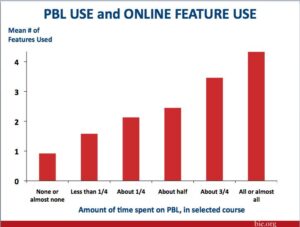
Other publications / studies
- PBL in K-12: A survey of researchers and shared online resource (AERA Chair project)
- Problem Based Economics IES-funded RCT study (WestED, UC-Berkeley and UCLA-CRESST)
- Within- and across-teachers PBL experiment (Grand Prairie, ISD in TX) for AEA365.org

J.A. and Kathryn Albertson’s Foundation
build))The Opportunity One initiative
- gave 5 computers to all schools in Idaho
- ran statewide Teaching with Technology sessions for teachers
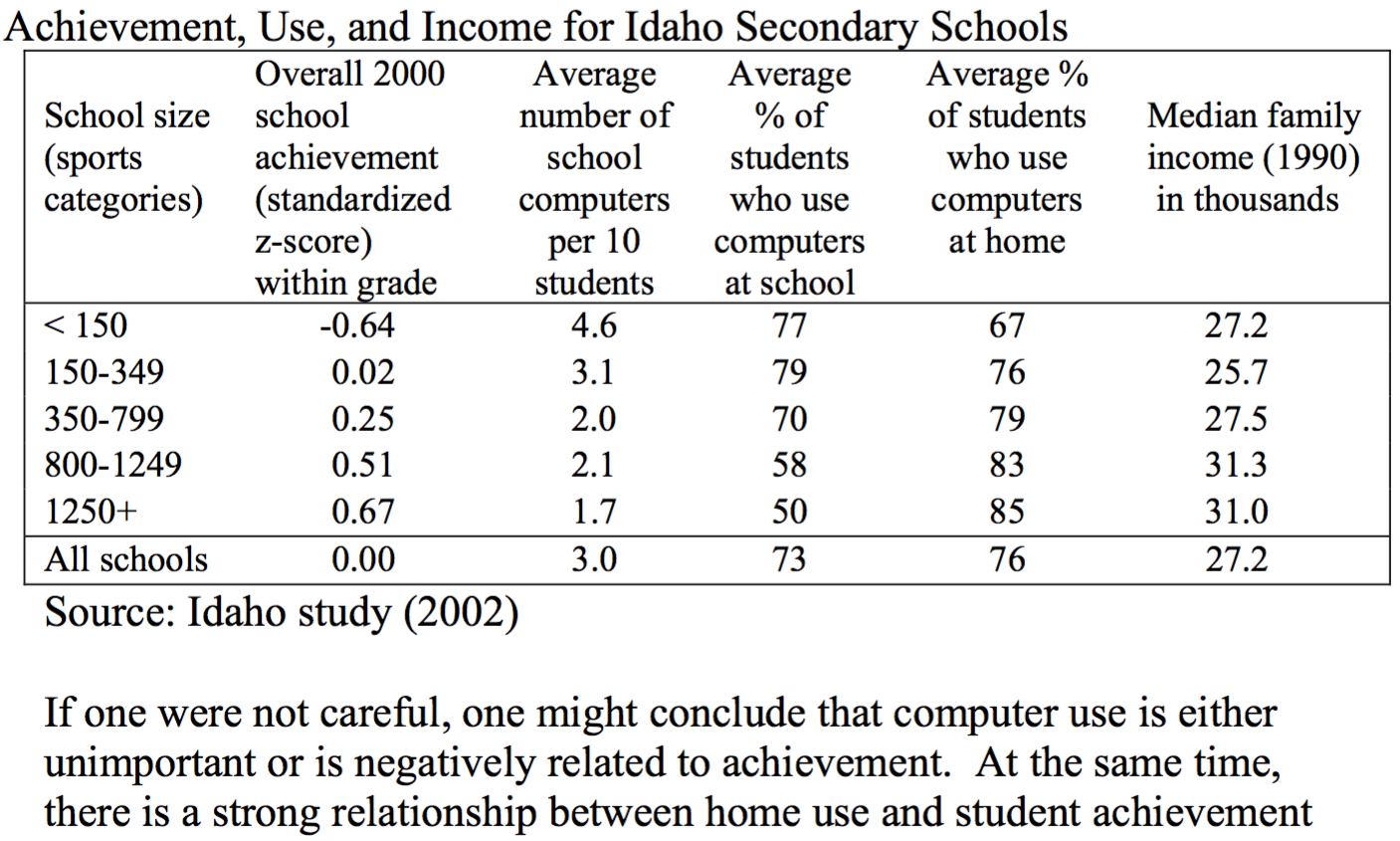
BIE put out two reports
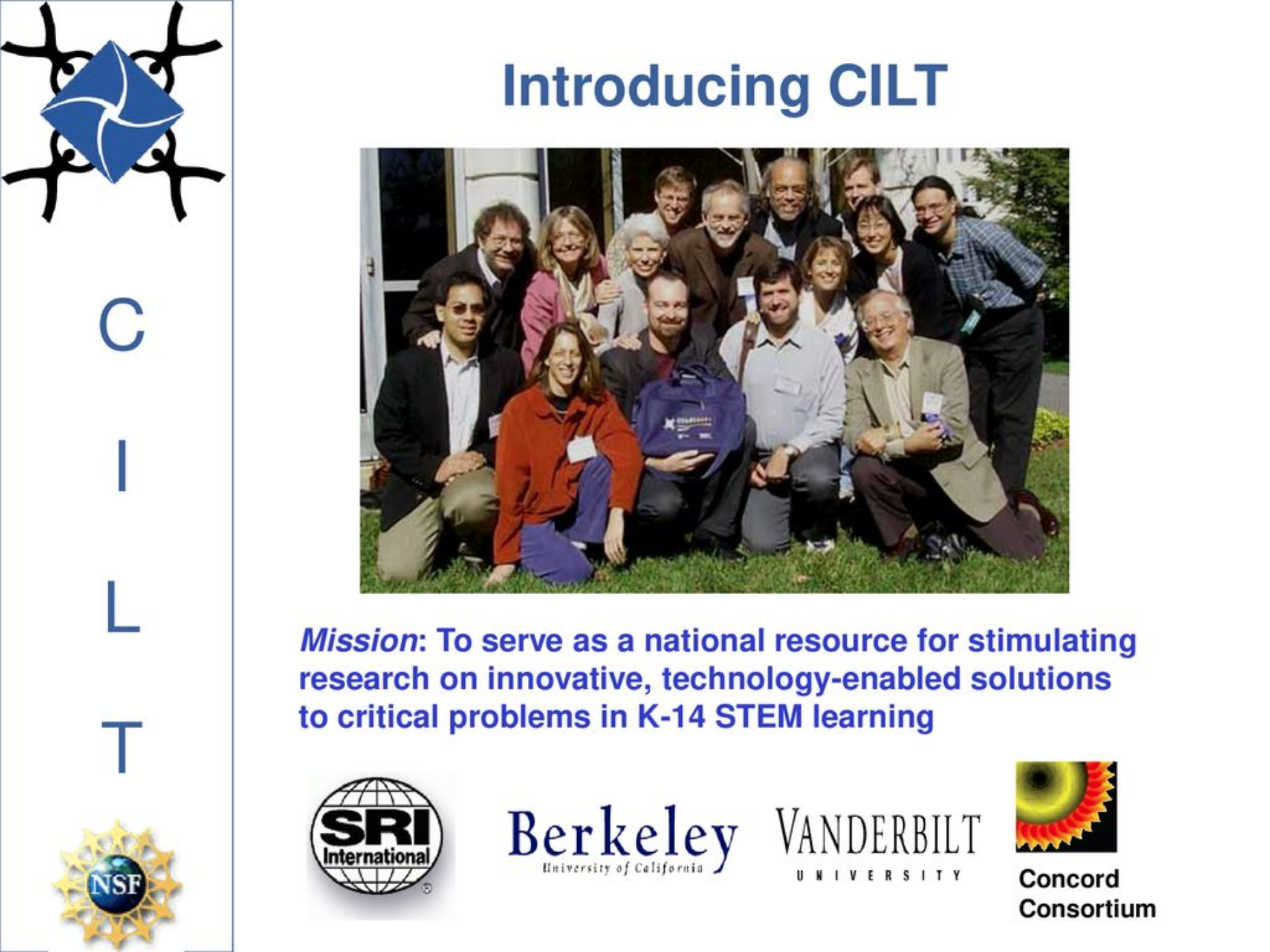
Center for Innovative Learning Technologies
CILT involved learning sciences, higher education and industry.
- Ravitz, J. (2004) A doorway to new tools and practices: Supporting teacher education, research and development with an online netcourse. In N. Sabelli and R. Pea. (Eds.). Uniting people, technology and powerful ideas for learning. Six years of knowledge networking in learning sciences and technologies, 94-101. Menlo Park, CA: SRI International.
- Yarnall, L., Penuel, W., Ravitz, J. , Murray, G., and Means, B. (2003). Portable assessment authoring: Using handheld technology to assess collaborative inquiry. Education, Information & Communication, 3(1), 7-55.
- Ravitz, J. (2000) CILT 2000: Using technology to support ongoing formative assessment in the classroom. (2000) Journal of Science Education and Technology, 11(3)

UC Irvine - TLC'98 National Survey
This national survey study continued my collaboration with Henry Jay (“Hank”) Becker and included Margaret Riel.
This study was funded by both NSF and the US Dept of Ed, and endorsed by a dozen national associations.
Complex sampling produced weighted and unweighted data for high intensity technology-using teachers and schools, major reform models, and others, and a representative sample (total N = 4000+).
Measures were subsequently used in repllication studies, with technical assistance, to set baseline measures (e.g., SimCalc II study in Texas and and the Southeast Regional Development Lab (SEDL) atudy.
Teaching, Learning & Computing: 1998
- Home || Methods || Surveys || Reports || Presentations
- Reports (selected)
- Participants Report
- Report #3: Computer Use
- Report #4: Constructivist Beliefs & Practices
- Slides (selected):
- Constructivist Philosophy & Practices (AERA)
- Reform & Tech (COSN)
- Major Reform Programs

BBN Educational Technologies: National School Network
My first collaboration with Henry Jay (“Hank”) Becker used Don Ely’s 8 conditions to distill 3 pillars for change: 1) Desire for Innovation, 2) Participation an Building Knowledge, and 3) Supportive Conditions
Conditions that Facilitate Internet Use in Schools with High Internet Connectivity: A National Survey
- After the Wires (AERA Paper)
- Preliminary findings (AECT paper)
- Full Dissertation
Articles
Design & Feedback Systems
R&D efforts I led included the Online Internet Institute evaluation, and the Site Feedback Form (example 1 in BJET article). Supporting these is why I became an evaluator, as discussed in this TechTrends interview.
My research has always supported educational R&D
